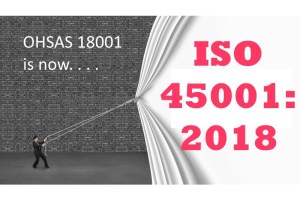
What is the difference between ISO 9001:2008 and ISO 9001:2015?
In 2015 a new
edition of ISO 9001 was released, and with it came some changes. A new edition
is released every 7 years for ISO 9001 to improve the way organizations adopted
the standard and the way it was used to interact with changes within
organizations. These changes relate to technology, new procedures, and
available software.
The newest edition
of ISO 9001:2015 was released on the 23rd September 2015, and organizations
were given 3 years to transition from ISO 9001:2008 to the newer edition. Those
that do not adapt before 23rd September 2018 will no longer be certified.
So, what are the
differences?
The first obvious difference is the number of
clauses included in each standard.

The first 3 clauses are generally the
same in both standard versions, however, the last seven clauses are based on
the Plan, Do, Check, Act (PDCA) cycle. Planning includes the clauses 4, 5, 6
& 7 of ISO 9001:2015, while clause 8 comes under Do and 9 comes under
Check, finally clause 10 falls under the banner of Act. Integrating the PDCA
cycle into the standard strives towards continuous improvement of an
organization’s processes.
These additional clauses place ISO 9001
on par with the other standardized management systems, known as High-Level
Structure (HLS). They help create a system of core elements that other ISO
standards also integrate. If an organization is certified in one of the
associated standards (ISO 9001, ISO 14001, ISO 22000, or ISO 18001) it is
easier to additionally adopt another ISO standard.
In association with the PDCA cycle, ISO
9001:2015 puts a greater emphasis on measuring the inputs and outputs of
processes. The new version requires more monitoring of articles, information,
and specifications involved within a process, this allows an organization to
clearly identify the positive outputs of a process.
While some organizations already carry
out risk analysis of their procedures, under the new ISO 9001:2015 risk
assessment will become the standard for anyone certified. In actual fact,
‘risk’ is brought up 48 times in ISO 9001:2015 compared with only 3 times in
ISO 9001:2008. Due to the increase in risk-based thinking that ISO 9001:2015
encourages the preventive measures in ISO 9001:2008 are now redundant.
The context in which you construct a
quality management system has also changed. ISO 9001:2015 specifies that the
needs of interested parties must be taken into account. Evaluating and handling
with internal and external strategic questions to show you understand and
respond to the expectations of the parties concerned. These interested parties
now extend beyond customers and include personnel, shareholders, legislative
bodies, suppliers, and internal customers. An organization needs to
stay aware of the changing requirements of each interested parties,
anticipating them for future products and services.
Another big change in ISO 9001:2015
from ISO 9001:2008 is the emphasis on leadership. The adaption of the standard
requires more involvement from leadership and managers, to encourage a
harmonious integration within business processes and strategies. Top management
is required to pay more attention to the quality management system, especially
in relation to risk management, interested parties, and context of the
organization. The use of quality management systems is vital more now than they
have been in the successfulness of an organization, something of great
importance to top management, therefore the need for their involvement.
A final change within ISO 9001:2015 is
the change in terminology. Where most will remain the same some phrases will be
modified, such as the use of documented information rather than quality manual
or documented procedures.
Here are a few more of the main phrases
modified from ISO 9001:2008

Share This News





